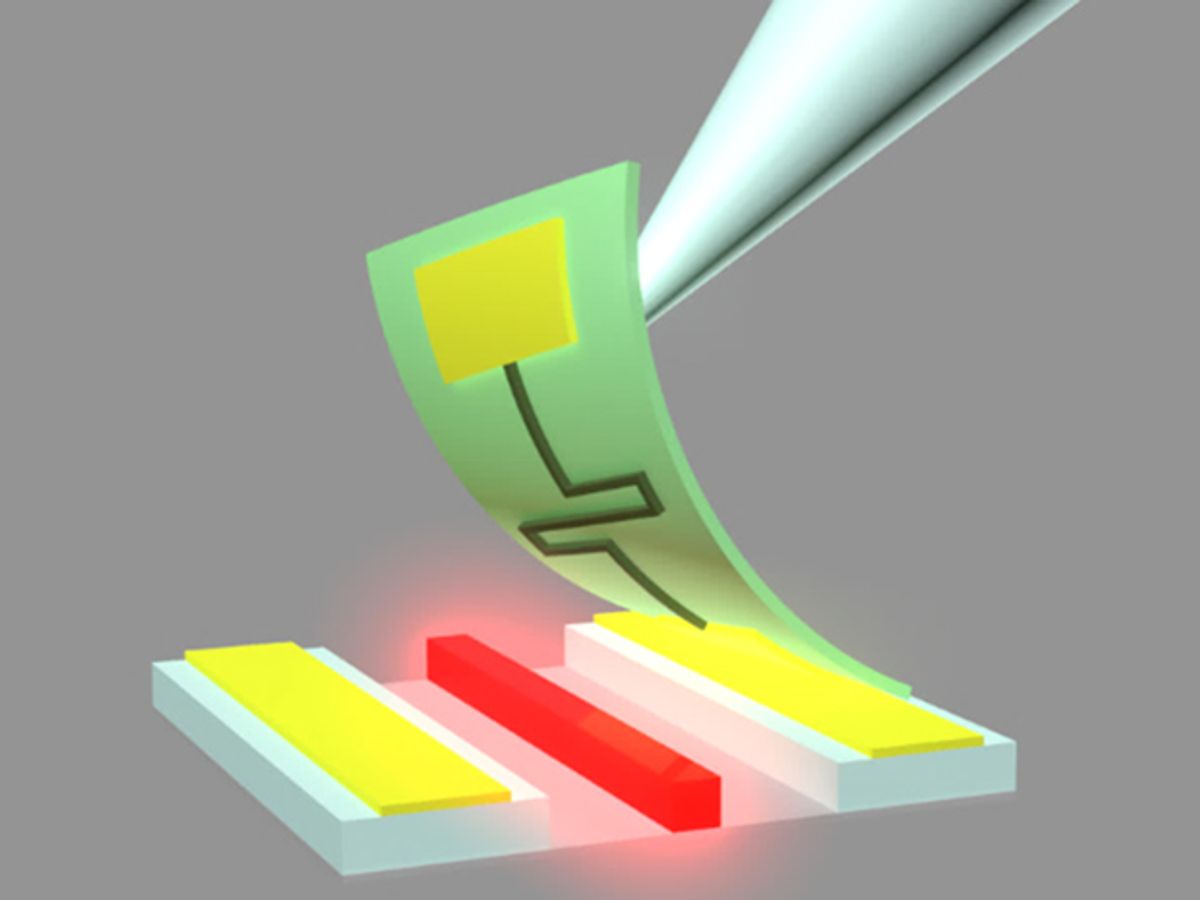Entangled single photons will play an important role, as information carriers, in quantum computing and quantum encryption, as well as in quantum cryptography. A very sensitive way to detect these single photons is by depositing arrays of superconducting nanowire single-photon detectors (SNSPDs) onto photonic integrated circuits (PICs).But creating such PICs has been problematic because the majority of the deposited SNSPDs fail to work.
Now a team of researchers from several U.S. research labs, led by physicist Dirk Englund at MIT, describe in the 9 January issue of Nature Communications how they succeeded in detecting single entangled photons using SNSPDs that were integrated with a PIC using a new approach.
Instead of depositing the SNSPDs directly on the PIC’soptical waveguides, the team fabricated large numbers of SNSPDs on a separate silicon nitride substrate. “These SNSPDs rely on wires of niobium nitride that are extremely thin—a few nanometers thick and a few tenths of a nanometer wide—so it is very difficult to fabricate them uniformly,” Englund told IEEE Spectrum.“As a result, a very large fraction of them don’t work.”
But the sensitivity of these detectors depends on their small size. They’re so tiny that the current that passes through the superconducting nanowire is almost equal to the “critical current”—that is, the current at which the superconducting properties of the conduit break down. If the evanescent field of a single photon passes through a waveguide on which a nanowire detector is placed, itcan break up a Cooper pair in the nanowire, turning it suddenly into a normal conductor with resistance. This results in a localized hotspot in the nanowire, and consequently, a voltage pulse that can be measured and timed.
As a proof-of-concept, the team built an optical network that allows a single optical chip placed in a stream of laser-emitted photons to detect entangled photon pairs. The chip comprises two input ports, A and B. The waveguide of each input port is placed close to another waveguide, forming a 50:50 beam splitter, resulting in four output ports, A1, A2, B1, and B2. A single photon has an equal chance of landing in either of these ports. This allows discrimination between single photons and bunched photons. The researchers explain that if they got a signal at one of the output ports, they could be certain that they were detecting a single photon. If they got a signal at either one of the A ports and either one of B ports simultaneously, that indicated the presence of an entangled single-photon pair. (Signals at A1 and A2 or at B1 and B2 indicated bunched photons, and those signals were discarded.)
This is a first step towards photonic integrated circuits that might carry many more superconducting detectors, and that could be used in quantum computation, argues Englund. “To make the computation on the chip powerful, you will need more than two entangled photons; you will need tens of photons to make things competitive with classical computers, and you will need tens of detectors,” Englund says.
However, he says, quantum encryption based on entangled photons, alreadycoming within reach. “Quantum key distribution, which is a way of building secure keys for ultra-secure encryption, is something we’re pursuing. Multiple SNSPDs will allow us to run across many spectral channels as a way of increasing the communication rate,” he added.
For their experiment, the researchers used infrared photons with a wavelength of 1560 nm. “Our chip works in the infrared because we wanted to make our technology compatible with telecom technology,” says Englund.
Currently, indium gallium arsenide photodetectors are able to detect single photons at this wavelength, which is in the near infrared band, but they are less efficient than superconducting detectors. “Among all the technologies available in that wavelength range, superconducting nanowire detectors have the highest performance in terms of timing jitter (stability that allows precise timing) and in terms of efficiency in detecting photons,” says Englund.
But when these devices will leave the laboratory remains an open question. Says Englund:
“I believe that our current implementation, placing detectors one-by-one, will remain a great tool to build prototype quantum information processing systems. Maybe it’d also be okay for small volume. If the demand for such detectors increased, then the yield might also improve with greater investment in the fabrication of such superconducting devices.”



